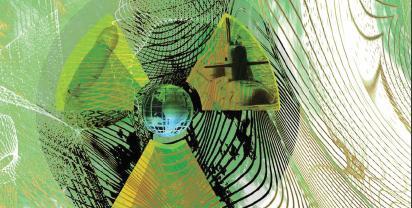
Image courtesy: The American Physical Society
By James Dacey
Any human activity leaves behind dust, and, if we look closely at this dust, it will always provide a clue to the activity that produced it. This is the idea of nuclear forensic scientist, Klaus Lützenkirchen, who draws an analogy between crime scene investigation and the need to monitor global nuclear activities in a more scientific fashion. Lützenkirchen was speaking today at the annual conference of the American Association for the Advancement of Science (the “triple A-S”), which kicked-off today in San Diego, California.
Earlier in the day, Vice President Joe Biden had addressed this same issue during a speech at the White House, and the American Physical Society (APS) has just released a report, Technical Steps to Support Nuclear Downsizing.
Lützenkirchen, who is head of the nuclear safeguards and security unit at the European Commission Joint Research Centre (JRC), admits that his analogy does break down somewhat as nuclear fingerprints rarely tend to be unique. He proposes, therefore, building a profile of nuclear dust (actual, not figurative, dust), focused on the analysis of chemical, morphological and isotopic qualities. In this way, scientists can collect vital clues to the origins of intercepted nuclear material.
This discussion of international nuclear activities is strongly in keeping with the theme at this year’s AAAS meeting, “Bridging Science and Society”. I’m here in sunny San Diego (yeah, life’s cruel sometimes), so watch this space for more entries from the meeting in the coming days.



